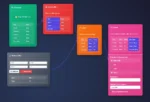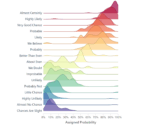Bursting analytics workloads—characterized by short-lived, highly intensive computing demands—have become ubiquitous in data-rich environments. Enterprises tackling such fluctuating data workloads require a computing strategy that’s agile, scalable, and economically viable. Ephemeral computing, the practice of provisioning short-lived cloud resources on-demand, has emerged as the powerful and strategic solution decision-makers never knew they needed. Leveraging ephemeral computing infrastructure enables organizations to overcome traditional provisioning bottlenecks, reduce wasted resources, and execute powerful analytics using advanced technologies with remarkable efficiency. Whether it’s swiftly analyzing massive streams for real-time fraud detection, handling periodic peaks in data engineering tasks, or extracting meaningful insights to predict customer churn, ephemeral computing empowers analytics transformation across every size and scope. This confidence in rapid responsiveness unlocks unprecedented opportunities for innovation, cost control, and competitive advantage—transforming how organizations harness data.
Understanding Ephemeral Computing and Its Strategic Advantage
Ephemeral computing refers to the practice of deploying short-lived, transient, and elastic computing resources capable of scaling quickly to match fluctuating demand. Traditionally, analytics workloads were hosted on permanent servers or on-premises clusters—typical setups that often led to resource underutilization, costly provisioning delays, and limited adaptability. The dynamic nature of cloud infrastructure, particularly serverless computing and container orchestration, has changed that paradigm entirely. Ephemeral systems employ resources for brief, intense workloads—automatic scaling, automated provisioning mechanisms, and rapid teardown once workloads conclude—resulting in cost optimization and extreme agility.
Leaders who harness ephemeral computing are better positioned to respond strategically to market opportunities and analytics challenges as they arise. By adopting data analytics for business growth, organizations can leverage these brief and powerful computing environments to glean deeper insights quickly. The speed-to-value underpinning ephemeral computing not only benefits analytics efficiency but also directly minimizes costs compared to traditional persistent infrastructures. The flexibility inherent in ephemeral resources provides stakeholders with previously hidden avenues for innovation and agile experimentation—not possible in long-running infrastructure or static provisioning scenarios.
In a data-driven economy, taking advantage of ephemeral computing as part of a comprehensive technology strategy yields quantifiable competitive advantages. Whether organizations are scaling to narrowly focused burst analytics operations or responding proactively to real-time data suspicious activity through robust data streaming initiatives for fraud prevention, the ephemeral computing model is proving strategic and indispensable.
Ephemeral Computing in Practice: Real-World Use Cases
Real-Time Fraud Detection and Prevention
Financial and payment organizations consistently face the threat of fraud, requiring sophisticated analytics to detect suspicious behavior on-the-fly. By employing ephemeral computing, teams can dynamically scale analytics resources to handle short-lived traffic spikes inherent in payment processing and e-commerce events. Leveraging short-term computational power, organizations power ultra-rapid analysis of massive transaction streams, effectively detecting and stopping fraud proactively. By combining observability mesh technologies for holistic data monitoring with ephemeral computing, financial services harness keen oversight and instant scalability for accurate anomaly detection.
Efficient Churn Prediction Analysis
Businesses today rely on predictive analytics to reduce customer attrition and boost retention outcomes. Periodically running robust churn analysis tools requires considerable computational resources. With ephemeral computing solutions, tools like open-source analytics and machine learning frameworks can be rapidly deployed within highly scalable, temporary environments, eliminating the need for always-on infrastructure. Through strategic pairing with predictive modeling, such as those discussed in our comprehensive guide on predicting client churn with open-source tools, organizations avoid sunk infrastructure costs and enjoy high-quality, timely insights into customer behaviors.
Peak Data Engineering Workloads and Event-Driven Analytics
Data engineering operations frequently require periodic high-intensity resource usage, particularly in batch-processing scenarios and periodic event-driven ingestion. Ephemeral computing supports these bursty workloads by instantly increasing cloud resources for data ingestion, transformation, and rapid computation. Organizations utilizing modern data engineering frameworks and methods—outlined in our recent piece on embracing Node.js for data engineering—can leverage fast-provisioned infrastructure to achieve seamless workflow execution. Event-driven analytics, automated ad-hoc queries, and periodic ETL jobs all lend themselves neatly to the ephemeral computing model.
The Technical Underpinnings of Powerful Ephemeral Computing
Ephemeral computing significantly benefits from advanced cloud technologies, including containerization and serverless architectures. Container orchestration frameworks such as Kubernetes allow containers to automatically scale up and down swiftly. These frameworks enable ephemeral computing by ensuring rapid deployment and efficient resource utilization during expansive analytics workloads while autonomously tearing down when workloads conclude.
Serverless computing models expand on this capability by provisioning brief runtime environments triggered by events, completely abstracting away the responsibility of infrastructure management from data engineering and analytics teams. Cloud-native, event-driven computing environments supporting ephemeral resources effectively power workloads tailored to short-lived demand. These mechanisms and their inclusive management tools reduce operational complexity, instill best practices, and grant enterprise stakeholders much-needed confidence in delivering strategic analytics solutions.
Alongside these traditional cloud solutions, forward-thinking organizations exploring emerging technology innovations like quantum computing—highlighted in our guide to Quantum computing’s impact on data processing—can further augment their ephemeral computing strategies in coming years. By proactively understanding and adopting scalable, transient computing frameworks now, decision-makers position their enterprises favorably alongside future technology innovations.
Common Challenges and Effective Strategies to Utilize Ephemeral Computing
While ephemeral computing offers clear advantages, it’s essential for analytics teams to overcome certain fundamental challenges to ensure effective deployment and sustained results. Among these challenges include capturing ephemeral results persistently through smart storage strategies, maintaining data consistency and securing sensitive analytics data in temporary environments, and ensuring robust observability across rapidly shifting infrastructures.
Effectively capturing the value of ephemeral analytics workloads demands data persisting best practices—such as swiftly writing impactful analytics results to optimized data stores that outlive short-term computing instances. Additionally, a commitment to infrastructure observability ensures analytics results remain traceable, visualizable, and continuously monitored. Organizations must also avoid inadvertent mistakes discussed in our cautionary feature regarding patching data lake issues via reporting tools. Instead, integrating ephemeral analytics results with strategic well-managed data lakes ensures reliable, scalable, and highly available insights and reports.
Ultimately, addressing these strategic challenges thoughtfully—including implementing security best-practices for ephemeral workloads and cultivating strong DevOps alignment—enables organizations to fully capitalize on ephemeral computing as a cornerstone of modern analytics scaling methodology.
Embracing Ephemeral Computing as an Analytics Competitive Advantage
In today’s fast-paced technological environment, agility and speed are valuable commodities—especially for analytics-intensive organizations. Ephemeral computing provides tactical answers to business leaders who demand insights rapidly, accurately, and cost-effectively. Enterprises leveraging scalable, short-lived cloud configurations unlock all-new levels of responsiveness, efficiently tackle bursts in analytics workloads, and dramatically reduce long-term infrastructure overhead.
Organizations aiming for strategic analytics innovation must recognize the clear, substantial benefits ephemeral computing provides. By implementing comprehensive analytics preparedness showcased throughout our expertise—ranging from visualization via expert data visualization consulting services, robust streaming analytics development, proactive fraud detection, and customer churn mitigation—leaders can fully transform data capability, achieving clear competitive differentiation.
Ephemeral computing is no longer merely a convenient technical option—it’s a vital strategic component, central to gaining advantage amidst today’s complex data challenges and tomorrow’s inevitable disruptions.
Tags: ephemeral computing, burst analytics, serverless architecture, data analytics, cloud computing, strategic innovation



















